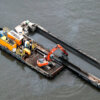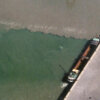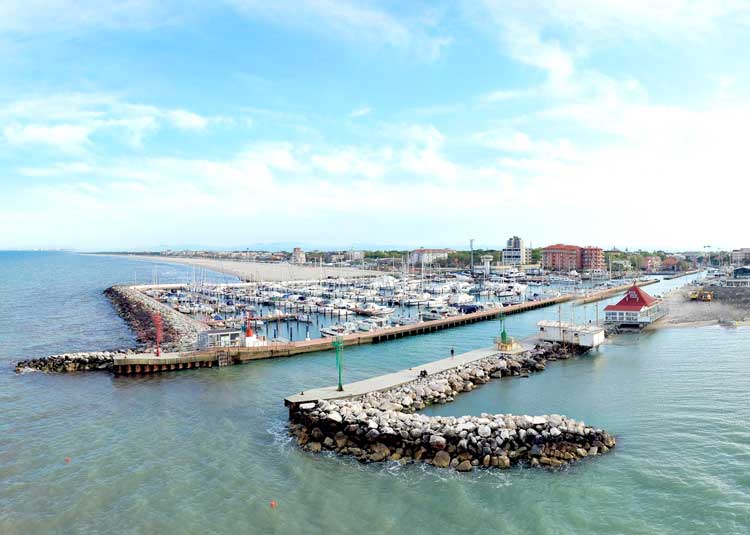Turbidity is a leading factor in causing underwater disturbances to marine life and must be minimised and monitored during a dredging project.
Turbidity, an optical quality
Turbidity is an optical quality of water and describes how clear or cloudy the water is. It describes the degree to which water contains particles that cause cloudiness or muddiness resulting in the disturbance of sunlight.
Water is turbid – that is cloudy, opaque or thick – when it contains suspended silt. If turbidity is low, the water is transparent and sunlight shines through the water in a straight line down to the waterbed.
When turbidity increases it changes the direction of the light, so that the light scatters, illuminating the particles in the water, much the way a ray of sunlight illuminates specks of dust in the air. The cloudier the water, the greater the turbidity. The further sunlight penetrates the water, the higher the water clarity and the lower the turbidity.
Importance of turbidity
Turbidity is normal phenomenon in water and can be caused by currents or storm that stir up particulate matter. But dredging can also cause raised levels of cloudiness and is one of the factors that should be measured before a dredging project begins to establish a baseline.
Total suspended solids
Suspended matter such as clay, silt and organic matter, as well as plankton and other microscopic organisms interfere with the passage of light through the water and thus cause turbidity. Taken together all these ‘particles’ are known as the total suspended solids (TSS). The greater the amount of TSS in the water, the murkier it appears, and the higher the measured turbidity.
TSS is the measure of the particles suspended in the water. Turbidity is a visual description of how the water looks. When turbidity exceeds certain levels it can block sunlight that marine fauna and flora need to remain healthy.
By creating a baseline before the start of a dredging project and monitoring turbidity throughout the project, a realistic picture will emerge and problems can be avoided or mitigated.
How to measure
Turbidity is measured using specialised optical equipment in a laboratory or in the field. A light is directed through a water sample, and the amount of light scattered is measured. The unit of measurement is called a Nephelometric Turbidity Unit (NTU), which comes in several variations. The greater the scattering of light, the higher the turbidity. Low turbidity values indicate high water clarity; high values indicate low water clarity.
The consequences of too much turbidity
A significant increase in turbidity from the background values can disrupt the natural environment and hinder the growth of flora and fauna. When sunlight is blocked from penetrating through the water, high concentrations of particulate matter will modify light penetration, causing shallow lakes and bays to fill in faster and smother benthic habitats. This impacts both underwater organisms and their eggs. Photosynthesis will also be reduced, which reduces the productivity of marine flora like seaweed and bay grasses in the waterbed. In addition, cloudiness reduces the aesthetic quality of water bodies, which can have a negative impact on recreation and tourism.
Monitoring
Turbidity during dredging operations should be and can be measured on a weekly, daily, hourly or even continuous basis depending on the locality. Turbidity measurements are then an immediate and reliable indicator of marine conditions – unlike testing water for other physical or chemical properties for which samples must be sent to laboratories.
The focus of monitoring investigation programmes should be to establish accurate, real-time measurements of the average natural background turbidity at the site prior to dredging – the baseline – and then determine the characteristic increase of the averaged turbidity during dredging. The comparison of these two gives insight into any significant changes caused by dredging and helps to quantify the potential impacts.
By monitoring turbidity carefully during a project, choices can be made to limit turbidity. Choices of equipment and time of the year (environmental window) for dredging can be adapted to reduce the risk of harm to the natural environment.
Long-term effects
Recent studies indicate that the impacts of turbidity are often temporary and of short duration. Usually when dredging stops, the measured elevation of turbidity often subsides rather rapidly. Other factors such as storms can have similar effects and also subside once the storms have passed. Special attention is necessary when working in sensitive environments like coral reefs, wetlands and mangroves.


































